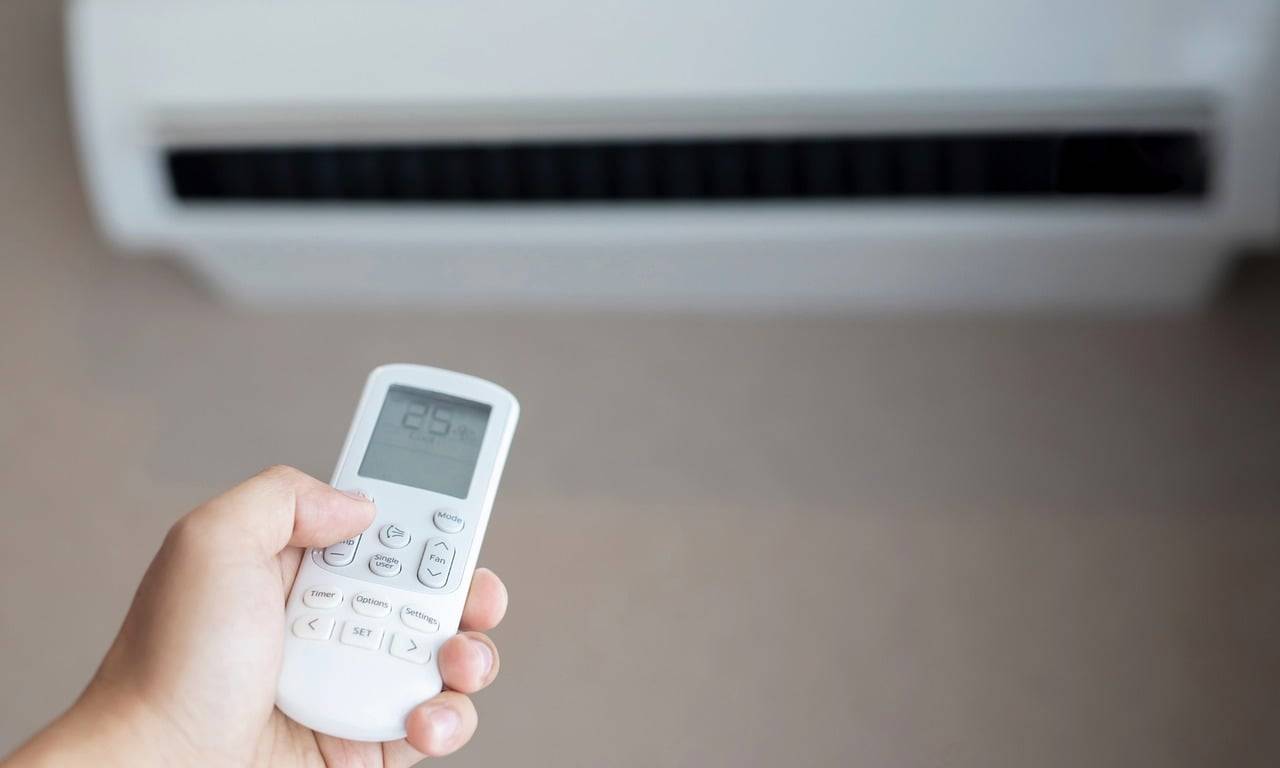Air conditioning is a lifesaver during hot months—who doesn’t love walking into a perfectly chilled room on a sweltering day? But let’s be real: those hefty electricity bills can quickly turn that cool comfort into a hot problem for your wallet. It’s no wonder many of us find ourselves staring at that “Eco Mode” button on our AC remote, wondering if it could be our financial hero.
The manufacturers promise it’s an energy-efficient miracle worker, but does it live up to the hype? Is it just a fancy term for “slightly less cool but still expensive”? Fear not, because we’re diving deep into the world of Eco Mode to figure out if it’s worth your trust (and your electricity bill). In this article, we’ll see how Eco Mode works, whether it’s a real money-saver, and how to milk every penny of savings out of this feature without sweating (literally).
What is Eco Mode on an AC?
Eco Mode, short for “economical mode,” is a feature designed to reduce energy consumption without compromising comfort. When activated, the AC operates at a more moderate pace, adjusting its cooling cycles and fan speeds to maintain a set temperature using less power.
How Eco Mode Works:
- Temperature Regulation: Eco Mode reduces the frequency of compressor cycles, keeping the room temperature stable without running continuously. This ensures consistent cooling while using less energy overall.
- Fan Speed Adjustment: Fans often operate at lower speeds, further decreasing power consumption. By avoiding full-speed operation, the AC achieves better energy efficiency.
- Energy Usage Monitoring: Many ACs with Eco Mode have sensors to adjust performance based on room conditions, such as humidity and temperature, ensuring the most efficient energy use at any given moment.
By focusing on maintaining a comfortable range rather than constantly battling to reach the lowest possible temperature, Eco Mode helps reduce electricity usage.
Does Eco Mode Really Save You Money?
The big question is whether using Eco Mode translates to noticeable savings on your energy bills. The answer depends on several factors, including your AC type, usage habits, and local electricity rates. Let’s dive deeper into this:
1. Energy Consumption Comparison:
Studies and manufacturer tests have shown that Eco Mode can reduce energy consumption by 20-30% compared to standard cooling modes. This is achieved by:
- Running the compressor less frequently, which directly cuts down electricity usage.
- Optimising fan speeds to balance performance and power efficiency.
- Maintaining a steady temperature instead of aggressive cooling cycles that require more energy.
2. Real-World Savings:
Let’s crunch some numbers. Assume:
- A 1.5-ton AC in standard mode consumes 1.5 kWh of electricity per hour.
- In Eco Mode, the same AC consumes 1.0 kWh per hour.
If the AC runs for 8 hours a day:
- Standard Mode: 1.5 kWh x 8 hours = 12 kWh/day.
- Eco Mode: 1.0 kWh x 8 hours = 8 kWh/day.
Over a month, this difference can result in significant savings. For instance, in areas where electricity costs $0.20 per kWh:
- Standard Mode: 12 kWh/day x 30 days = $72/month.
- Eco Mode: 8 kWh/day x 30 days = $48/month.
This means you could save $24 per month simply by switching to Eco Mode, especially in regions with higher electricity rates (Consumer Reports).
3. Comfort Trade-Offs:
While Eco Mode saves energy, it may cool the room more slowly or keep temperatures slightly higher than standard modes. For instance, instead of rapidly cooling a room to 22°C, Eco Mode might stabilize the temperature at 24°C over a longer period. For some, this trade-off is negligible; for others, it might affect comfort levels during peak heat.
Factors That Affect Savings
Eco Mode’s effectiveness isn’t universal. Several factors can influence how much you save and how well it works for you:
1. AC Type:
- Inverter ACs: These are more energy-efficient overall and work seamlessly with Eco Mode because of their variable-speed compressors. The combination optimizes performance and energy use (Energy.gov).
- Non-Inverter ACs: While still effective, the savings might be slightly lower since these units operate at fixed speeds and consume more energy during start-up cycles.
2. Room Size and Insulation:
- A well-insulated room will retain cool air longer, allowing Eco Mode to work efficiently. Gaps in windows or doors, on the other hand, will force the AC to work harder, reducing potential savings.
- Larger rooms or spaces with high ceilings may require more energy to maintain a stable temperature, making Eco Mode less effective compared to smaller, enclosed spaces.
3. External Temperatures:
In extreme heat conditions, Eco Mode might struggle to maintain comfort levels. For instance, in areas with temperatures exceeding 40°C (104°F), the AC may need to run harder even in Eco Mode, which could offset potential savings.
4. Usage Habits:
- Running the AC for shorter periods maximises Eco Mode’s benefits. Long, uninterrupted usage might still save energy but could reduce the efficiency difference compared to standard modes.
- Overcooling the room (setting the temperature too low) negates the purpose of Eco Mode by forcing the compressor to work harder.
Pros and Cons of Eco Mode
Like any feature, Eco Mode has its strengths and limitations. Let’s break these down further:
Pros:
- Energy Savings: Reduced power consumption leads to noticeably lower electricity bills over time.
- Environmentally Friendly: Using less energy reduces your carbon footprint, contributing to global sustainability efforts.
- Longevity: Running the compressor less frequently may extend the lifespan of your AC, potentially reducing repair and maintenance costs.
Cons:
- Slower Cooling: It may take longer to cool the room compared to standard or turbo modes, which can be inconvenient during peak summer days.
- Comfort Variability: Some users might find the maintained temperature less comfortable, especially if they’re used to lower settings.
- Dependent on Room Conditions: Larger or poorly insulated rooms may not benefit as much, reducing the perceived advantages of Eco Mode.
Tips to Maximise Savings with Eco Mode
To get the most out of Eco Mode, combine it with smart AC usage practices:
1. Maintain Your AC:
- Clean filters regularly to ensure optimal airflow and efficient operation.
- Schedule professional servicing to check refrigerant levels, ductwork, and compressor performance.
2. Set Realistic Temperatures:
- Aim for 24-26°C (75-78°F) instead of extreme cooling settings. Each degree higher can save 3-5% on energy costs (Energy.gov).
- Avoid setting the temperature below 22°C, as this can significantly increase energy consumption.
3. Use a Smart Thermostat:
- Smart thermostats can automate temperature adjustments based on time or occupancy, enhancing Eco Mode’s efficiency. For instance, they can slightly increase the temperature when you’re out of the room, saving additional energy.
4. Pair With Ceiling Fans:
- Fans circulate cool air more effectively, reducing the load on your AC. This pairing can improve the perceived cooling effect without increasing energy usage.
5. Improve Room Insulation:
- Seal gaps in windows, doors, and walls to prevent cool air from escaping. Simple fixes like weatherstripping and insulated curtains can make a big difference.
- Use blinds or reflective films to block out direct sunlight, especially during peak hours.
FAQs About Eco Mode on ACs
Yes, but inverter ACs typically offer the best savings when combined with Eco Mode due to their variable-speed compressors.
No. Eco Mode primarily adjusts the compressor and fan speed; it doesn’t impact filtration or air quality settings.
Eco Mode can still save energy in humid conditions, but pairing it with a dehumidifier or using a Dry Mode setting might improve comfort.
To Conclude- Is Eco Mode Worth It?
Eco Mode can absolutely save you money on your energy bills—if used correctly. While it may not cool your room as quickly as standard modes, the energy savings, environmental benefits, and potential longevity of your AC unit make it a worthwhile feature for many households.
To make Eco Mode work for you:
- Optimise your AC settings and room conditions.
- Pair Eco Mode with other energy-saving practices like improved insulation and smart thermostats.
- Regularly maintain your AC for peak efficiency.
By combining these strategies, you can enjoy a cooler home and lower bills without sacrificing comfort. Give Eco Mode a try and see how much you save—your wallet (and the planet) will thank you!


